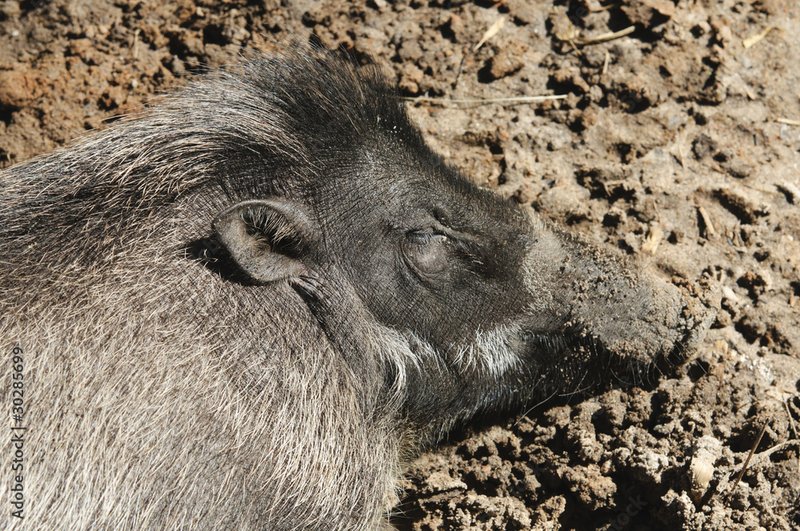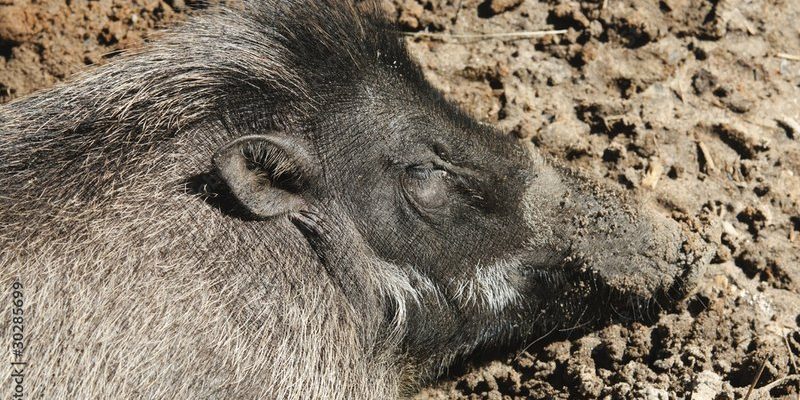
Now, you might be wondering why this pig is called “warty.” Well, it has these unique facial “warts” that set it apart from other pig species, giving it a ruggedly handsome appearance. In this article, we’ll uncover the evolutionary backstory of the Visayan warty pig and explore what makes it such a significant player in the biodiversity of its native region.
What Is the Visayan Warty Pig?
The Visayan warty pig (Sus cebifrons) is a wild pig species that can be found predominantly in the Visayan Islands of the Philippines. To get an idea of what these pigs look like, think about a stout pig with bristly fur and prominent facial warts. These features aren’t just for show; they play a vital role in their social behaviors and interactions.
These pigs are primarily black or dark brown, and they’re relatively small compared to domestic pigs. Adult males can weigh up to 150 pounds, while females are usually lighter. One of the most interesting things about the Visayan warty pig is its adaptability to various habitats, ranging from forests to grasslands. However, their populations are dwindling, making them critically endangered, which adds urgency to our discussion about their evolution.
A Glimpse into the Evolutionary Past
The evolutionary journey of the Visayan warty pig is a thrilling tale steeped in history. These pigs are part of the Suidae family, which includes domestic pigs and wild boars. It’s believed that their ancestors originated around 30 million years ago. So, what does this mean for the Visayan warty pig? Well, it means they have adapted and evolved over millions of years, developing traits that allow them to thrive in their unique environment.
You might be curious about their closest relatives. The Visayan warty pig shares a lineage with the Bornean bearded pig and the wild boar. This genetic relationship hints at a shared history, showing how different species have adapted to their habitats. Over time, like many island species, the Visayan warty pig evolved into a distinct form, fine-tuning its traits to fit the specific conditions of the Visayan Islands.
Physical Characteristics that Tell a Story
When it comes to the Visayan warty pig, its physical characteristics speak volumes about its evolutionary history. The most striking feature is, of course, the warts. These aren’t just quirks of nature; they serve a purpose. Males have these prominent warts on their faces that help them during fights, adding protection while they compete for mates or territory. Can you imagine a battle royale between two warty pigs? That’s some serious natural selection at work!
In addition to their warts, these pigs have thick, coarse fur and stout bodies, which are perfect for their habitat. The warty pig’s robust form helps them navigate through the dense underbrush and thick vegetation of their native forests. This adaptability is a critical part of their survival strategy, allowing them to thrive in environments that may seem inhospitable.
Diet and Foraging Behavior
The dietary habits of the Visayan warty pig are another fascinating aspect of their evolution. They are omnivores, meaning they eat plants, fruits, roots, and even small animals or insects. Their strong snouts are ideal for rooting around in the soil for tasty treats. Imagine them snuffling through the forest floor, using their keen sense of smell to uncover hidden morsels.
This foraging behavior has played a significant role in shaping their ecological niche. By consuming a wide variety of foods, they help maintain the health of their habitats. As they dig through the earth, they aerate the soil and facilitate the growth of diverse plant life. It’s like they have a natural gardening role, ensuring their ecosystem flourishes.
Conservation Status and Threats
Despite their resilience, the Visayan warty pig faces serious threats that have pushed them to the brink of extinction. Habitat destruction is the most significant factor. As forests are cleared for agriculture and development, these pigs lose their homes. It’s heartbreaking to think about an animal that has survived for millions of years suddenly facing such dire challenges.
Poaching is another severe threat, as their meat is sometimes sought after in local markets. Honestly, it’s frustrating to witness how human activities have such a dramatic impact on their future. Conservation efforts are underway to protect this unique species, but they need all the support they can get. Protecting the Visayan warty pig isn’t just about saving a single species; it’s about preserving the rich biodiversity of the Philippines.
Why This Matters: The Bigger Picture of Biodiversity
So, why should we care about the Visayan warty pig? Aside from being a significant part of their ecosystem, these pigs represent the incredible richness of biodiversity that our planet holds. Each species plays a role in the balance of nature, and when one is lost, it can have a ripple effect on the entire ecosystem.
Additionally, studying the evolutionary history of the Visayan warty pig helps scientists understand broader concepts, such as adaptation and survival. By examining these creatures, researchers gain insights that can apply to other species facing similar challenges. It’s like connecting the dots in a much larger picture of life on Earth.
As we wrap up our journey through the evolutionary history of the Visayan warty pig, it’s clear that this unique creature deserves our attention and protection. Its story is a reminder of the fragility of life and the intricate web of connections that bind us all. By learning about and advocating for the Visayan warty pig, we take a step towards preserving not just a species, but an entire ecosystem.
Let’s become champions for the Visayan warty pig. Whether through awareness, supporting conservation efforts, or simply sharing their story, each of us has a role to play. After all, every little action counts in the fight for biodiversity. So the next time you think of pigs, remember this remarkable species and the vital role it plays in our world’s tapestry.

